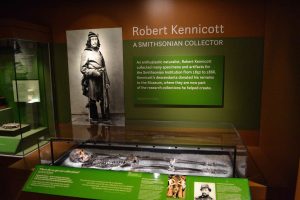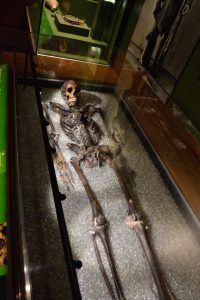I put the book down and brought my head back into the 21st century. I’d been reading 19th-century correspondence about explorations in the far Northwest by some of the most important people to document the biological diversity of Alaska and western Canada. I’d just finished a long letter from 1864 by Robert Kennicott to R. McFarlane, a Hudson’s Bay Company factor.
This was in William Healy Dall’s 1915 biography of Spencer Fullerton Baird, who was the first curator at the Smithsonian Institution and later served as Assistant Secretary and then as Secretary.
But no more time for idle thoughts. I had to finish packing and leave on a quick trip to Washington, D.C. I had business at the U.S. National Museum of Natural History (abbreviated USNM in our discipline) and at the National Science Foundation (NSF). Rose and I hadn’t been back there together since we left the area over 20 years ago, and it is really hard to have all your wits about you for morning meetings when you’re jet lagged by four hours. So we went a few days early and visited museums. It was wonderful. We saw an incredible number of marvelous things and so had more fun than the normal business trips usually provide.
One unspoken theme that struck me is that we commonly cross paths in space but not in time (this may be what makes museums so successful). Just this morning I saw that a snowshoe hare ran all around my truck after I parked it last night, and while we slept the flying squirrels came in to the bird feeder across the fresh snow. And every moose season I see tracks of big bulls that are spatially right where I want them—but are temporally just where they want to be.
 Imagine my surprise, however, to run across Robert Kennicott’s skeleton at the USNM in a special exhibit (Objects of Wonder). Kennicott died of heart disease in 1866 on an expedition to Alaska (he was just 30 years old). And, strangely, I had read about this not too long ago, because his death was the subject of a careful investigation this century. Dall had been a young scientist on that same expedition, and his explanation (50 years later) of Kennicott’s death by heart disease in Baird’s biography exactly matched that of scientists today. (Kennicott had been buried in a cast-iron coffin with a glass window, and his bones absorbed a lot of color from the metal.)
Imagine my surprise, however, to run across Robert Kennicott’s skeleton at the USNM in a special exhibit (Objects of Wonder). Kennicott died of heart disease in 1866 on an expedition to Alaska (he was just 30 years old). And, strangely, I had read about this not too long ago, because his death was the subject of a careful investigation this century. Dall had been a young scientist on that same expedition, and his explanation (50 years later) of Kennicott’s death by heart disease in Baird’s biography exactly matched that of scientists today. (Kennicott had been buried in a cast-iron coffin with a glass window, and his bones absorbed a lot of color from the metal.)
Another odd coincidence is that a group of us had crossed paths with a part of Kennicott’s legacy in the scientific literature just last year, when we recommended that the subspecies of Arctic Warbler that had been named after him be kept subsumed within the more widespread nominate form, Phylloscopus borealis borealis.
Anyway, good old Kennicott will be on exhibit through some time in 2019, so if you get the chance, drop by and cross paths.

